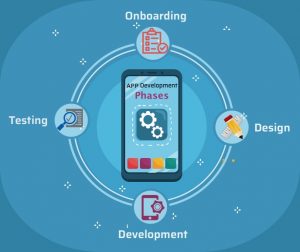Taking On A Mobile First Digital Transformation Approach in 2022

We All know how long it took to hear mobile-first strategies at C-Level Meetings. The “Digital Transformation” concept gained its importance within the last five years. Even still, most brands plan around this approach and end the conversation at this stage. The mobile-first digital transformation is labeled “too hard to implement” or faces the “set and forget” mindset. But, we know that customer experience and digital transformation now go hand in hand, and companies are starting to transform their departments.
70% of companies either have a digital transformation strategy or are working on one. Annual reports revealed an increase in mobile-first digital transformation strategies. With a global pandemic on the rise, we can only assume that digitization efforts have become the sole focus of companies. Starting in March, the world changed day by day, and companies only beginning to transform digitally were left behind within a few months. Mobility has now become a business requirement for every business. Mobile-first digital transformation strategies are replacing legacy systems. These strategies are integral to efforts that value customer access, experience, and feedback.
Mobile-First Digital Transformation
Busting the Myth
Whenever mobile-first digital transformation is talked about, teams bat a blind eye because of the centralized focus it is thought to have. For a long, the industry has focused on reaching the customer base through various platforms, including mobile. So, the sole focus of a “mobile-first” approach seems impossible. Usually, it is believed that mobile-first means “mobile-only”, a common misconception.
Mobile-first digital transformation means shifting the product focus to mobile interfaces as the significant channel targeting customers. Other media become a secondary focus. The brand’s entire digital presence is redesigned primarily for a mobile-first approach. Other tracks, including desktops, become secondary. The fundamental focus shifts from designing multiple strategies to target all channels to developing technology specific to the mobile audience.
What The Consumer Wants
These functionalities may or may not be available on the desktop version. That’s up to the business. Gone are the days when mobility was deemed as a product. Customers nowadays demand relevancy when looking for a product. A few years ago, “responsive” applications were all the customers wanted. Consequently, a mobile-first digital transformation has created new concepts.
Digital-first companies are 64% more likely to achieve their business goals than their peers.
We strategies a brand’s digital presence into four phases: plan, develop, launch, and monetize. Mobile-first strategies redesign each step, leaving behind the traditional mobile development techniques.

Planning
In this phase, brands strategize the form of digital presence they want to create. Usually, you and the dev team decide on a few platforms, including Android, iOS, and Desktop. But, with a mobile-first digital transformation focus, brands define the type of mobile experience they plan to deliver. It would help if you planned to create a customer experience as effective on a mobile device as on the desktop. This means you might have to begin and launch applications first. Nowadays, technological shifts like PWA’s which give a native look-and-feel, save thousands of dollars in development costs.
Read More- Top Progressive Web Application Frameworks in 2020
The abrupt focus shift requires your team to generate new plans. Usually, teams are used to following a certain number of steps to create a digital presence. That has got to change. Take your time understanding the different groups, infrastructure, time, and budget to get there. Once you’ve understood the basic structure determine and discuss the feature sets, platforms, and operating systems, the app will use.
Development
At this stage, your work is cut out for you because of all the pre-planning you did. You need to assess the capabilities of creative and IT teams, your budget constraints, and create a realistic delivery timeline. The development team that you hire will bring your ideas to life. You have to consider what matters, what needs to be developed, the budget, etc. Will development, it is vital to emphasize the importance of essential factors. Mobile-first digital transformation entails that the application is responsive, customer-centric, relevant, and optimized for the appropriate audience.
Launch
After completing the development phase, it’s time to introduce your brand to potential customers. This phase will take you through application discovery and audience gathering. You have invested a lot in your idea, get it the right audience, and your business is up for the digital transformation it needs. In today’s market, users have thousand of apps to choose from, and your competition probably will have the edge at this point. What you need is a data-backed mobile-first digital transformation strategy. You and the team should now target high-value app users, narrowing down your efforts to successfully launch your application.
If you follow a typical development strategy, you may exhaust most resources when you reach the launch phase. With a mobile-first approach, you need a separate marketing budget for the mobile app. Consequently, your mobile app is the primary target for your audience. Users uninstalling it o the first use, or worse, overlooking it, will prove to be a disaster at this stage.
Monetization
With so many competitors in the market, you can’t simply rely on organic traffic. Sometimes an ad push through app store optimization strategies can bring more audience to your newly launched app. Keywords optimization, search engine optimization, paid performance marketing, etc., can be your saving grace. These elements combined help you gain the competitive edge you need.
Benefits of A Mobile-First Strategy
The need to go digital has grown more than ever; 67% of the world’s population owns a mobile, 79% percent of which have purchased their mobile within the last six months. These observations are from 2019. With COVID-19 on the rise, we can only imagine how the numbers have risen. Mobile-first digital transformation offers many benefits, a few of which have compelled 89% of companies to adopt a digital-first business strategy or plan to do so.
Responsiveness Across All Platforms
Brands focused on developing seamless desktop interfaces in the past. Although these websites are functional on mobile browsers, it wastes many customers’ time and might eventually lose interest. Mobiles are much more accessible, and users tend to return to responsive and up-to-date applications.
Mobile app users spend an average 201.8 minutes per month shopping, compared to 10.9 minutes/month for website users.
Providing the same design across various devices gives the same customer experience on whatever device they view your site. Customer satisfaction and user experience are the keystones. Continuity to provide a fluid design and optimized content builds brand loyalty and increases ROI overall. The efforts you make initially will not help your customer but decrease your workload.
Customized Experience
We discussed a data-backed approach to target your audience. Knowing your audience helps you tweak your product to their liking and increases customer loyalty overall. It shows that you care about your customer’s experience. Each experience ensures maximum efficiency and customer satisfaction.
Digital transformation and a focus on customer experience can generate a 20-30% increase in customer satisfaction and economic gains of 20-50%.
Customers with mobile devices are “goal-oriented”; therefore, they have an objective approach. They have a no-fluff approach to researching and buying a product. With a mobile-first approach, you have the opportunity to do so. Easily navigatable channels personalize the experience of every customer. These efforts will maximize your business turnover.
The Shift
Companies have used multiple channels to target their audience for more than a decade. While every consumer has a different perspective, mobile-first strategies have emerged as the need of today. To shift from legacy systems and business models to an entirely new approach. A business can’t just jump the boat and hope for smooth sales. What you’re asking for is a cultural and technological shift.
60% of companies that have undergone a digital transformation have created new business models.
This shift requires you to make a strategic shift that will inevitably affect all your departments. It involves a complex intertwining of mobile app development, marketing strategies, and data-based research. We need to step out of the mindset of making our applications “responsive”. Our focus should move toward setting a foundation for customer experience. You need to ask yourself, “Are my company’s business operations in line with the mobile strategy we’re following?”
If not, you need to align them before investing in anything else. You need to ensure that applications across every department can deliver an adequate experience to monetize, engage, and increase ROI.
Takeaway
The mobile-first strategy has been discussed for a couple of years and is now being taken seriously because of COVID. With most employees working remotely, now is the perfect time to make a shift. It is certainly not the path of least resistance, but one that will leave you out of the race if not adopted. With this strategy, the focus should not be what devices but rather a cultural one. The world around us is changing rapidly; the way we communicate, operate, everything. When the dust settles, it isn’t going to be much different. If you’ve not already begun your transformation, now might not be too late. Start strategizing mobile experiences that build new revenue streams and create loyal brand advocates.
Novateus is a custom software development company that deals with the development of innovative solutions. We have years of experience working with both our offshore and in-house teams. If you need any help understanding anything or have a query, please leave a query or contact us.

